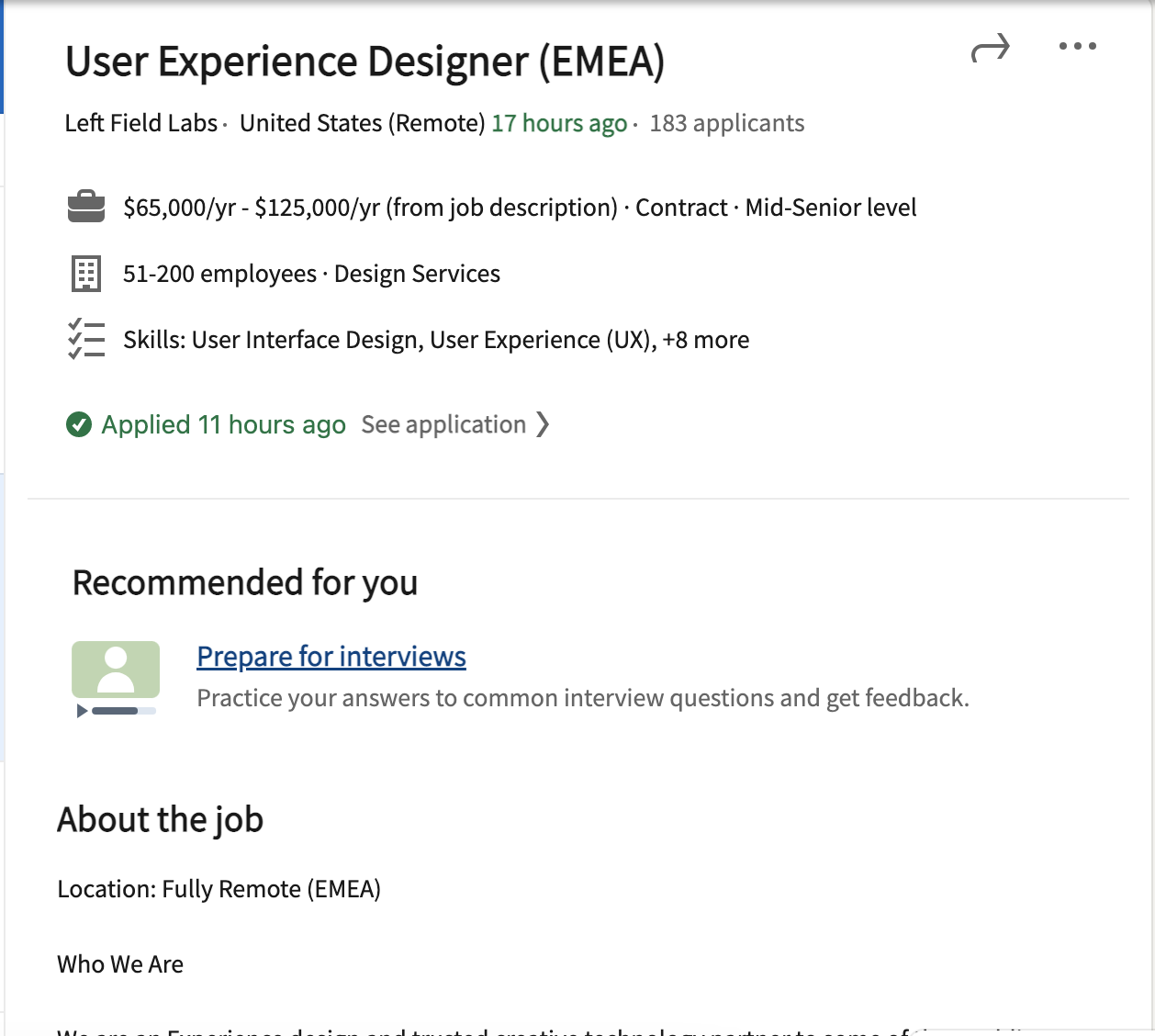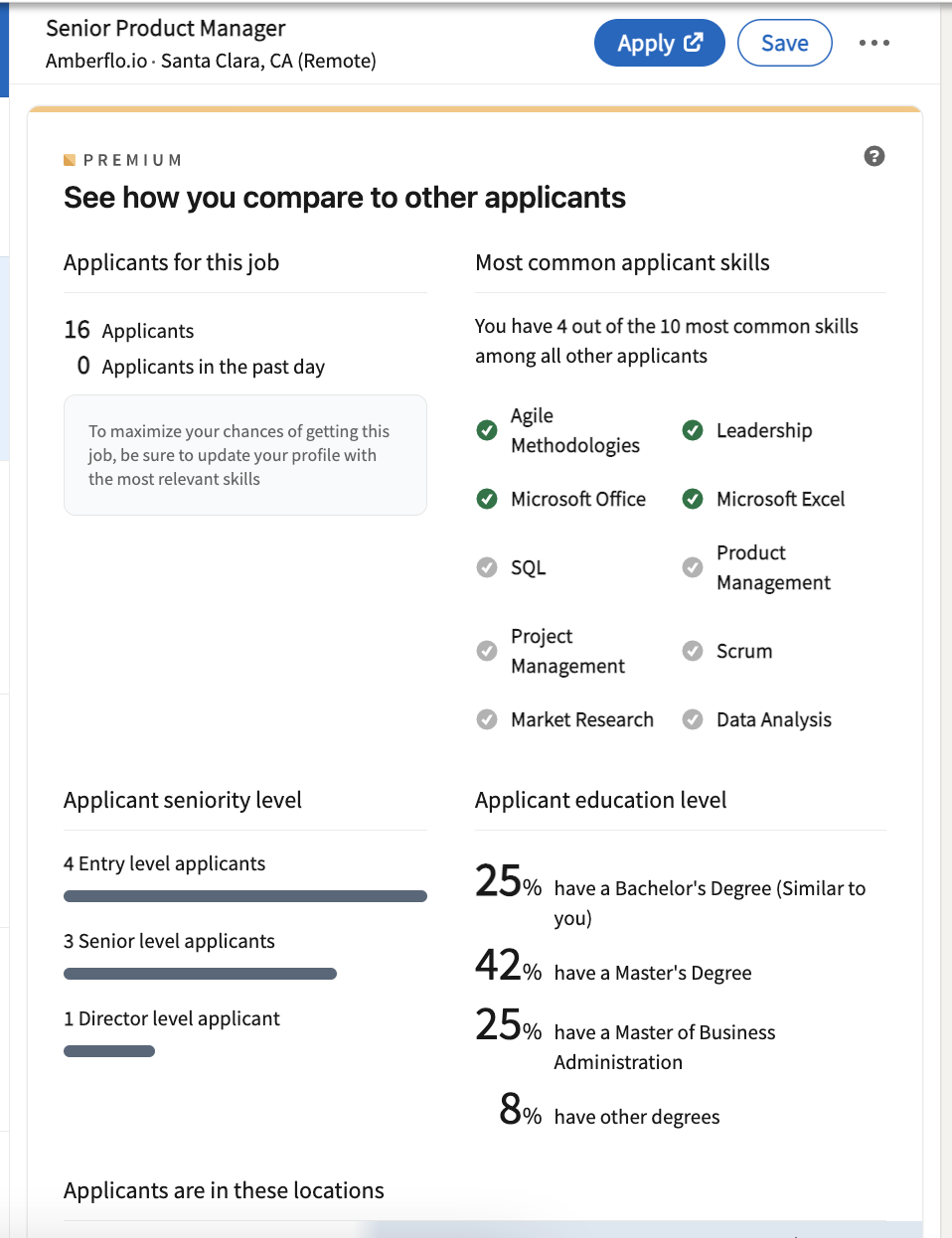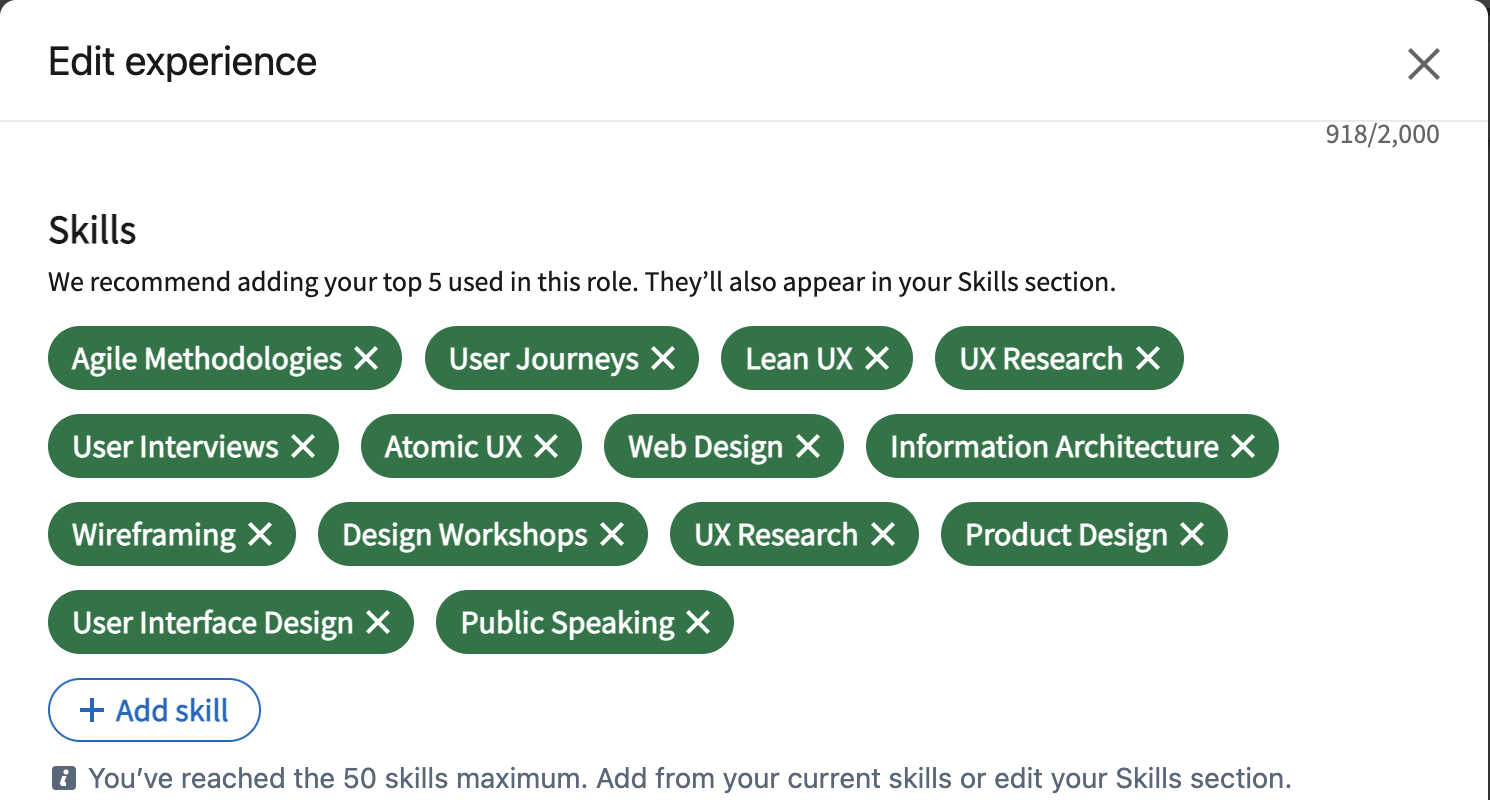Design Your LinkedIn to Get a Job in UX in 2023
LinkedIn is an incredibly useful tool to help you land your next job no matter what level you are in your UX career. But how can you optimize your LinkedIn for more UX jobs? How do you get more recruiters to reach out to you simply based on your profile?
In this article, we will learn:
Do UX designers need a LinkedIn?
Should I pay for a LinkedIn Premium or keep the Basic plan?
How to edit your profile to attract more views and conversations?
How to signal to recruiters that you’re ready to get hired?
1. Do UX designers need a LinkedIn?
Yes, it’s a vital tool that helps recruiters and hiring managers find you and your work. Jobs applications, recruiters, and managers all ask to view your LinkedIn as a way to get a glimpse at your background, your experience, and your authenticity.
2. Should I pay for LinkedIn Premium or keep LinkedIn Basic?
LinkedIn Premium is a paid version of LinkedIn that offers additional helpful features you don’t otherwise get with the Basic version. The offerings include:
InMail credits. Connect with hiring managers. Show your interest in an open role with InMail. It's 2.6x more effective than emails alone.
Profile views. See who's viewed your profile over the last 90 days, and who looks next.
LinkedIn Learning courses. Hone your skills or try something new — access over 15,000 expert-led LinkedIn Learning courses.
Competitive Intelligence
Out of the benefits, the most valuable is probably the data and the access to hiring managers via in-mail. As a Premium member you have a deeper understanding of your profile matched against the role, with helpful sections like :
How many applicants there are for this job
What the most common applicant skills are (which is a great way to quickly edit your LinkedIn profile and resume)
What the seniority level is of various applicants
What the common education level is of applicants
What locations applicants are in
Access to managers and recruiters
Probably the most helpful and significant feature is the access to messaging the hiring team. LinkedIn shows you who posted the job (not in all cases, but most), and message them with a pre-built message, pulled from your profile. You can customize this intro as much as you would like, but the hope is that you connect with more humans, directly instead of the ATS.
Below are screenshots of a job posting with the section demonstrated of the hiring team, and what the pre-built message looks like when you click “Message”.
I believe the LinkedIn Premium version is a good deal for the access it provides. The subscription costs $29.99/month and I think it really gives candidates a great edge for both job hunting and relationship building.
3. How do I optimize LinkedIn to get hired?
Get your basics out the way
Add a profile picture that is a clear headshot, simple, and recognizable. You do not need to have a fancy headshot in a professional studio. Take a photo against a blank wall, facing a soft light. Read more about how to choose the best LinkedIn photo. Good profile photos help you receive up to 21x more profile views and up to 36x more messages.
Add a background photo. Make the profile visually appealing with a simple background. “More than anything, the right background photo helps your page stand out, engage attention and stay memorable.” writes Jane Deehan, Senior Content Marketing Manager at LinkedIn.
Make your headline more than just a job title. Recruiters search you by your title, and relevant keywords help show your profile over other candidates. Add relevant keywords, and tell a micro-story of your background. For example, instead of calling yourself “UX Designer”, you can instead describe yourself as "UI/UX Designer | Visual Designer | Fintech | Ecommerce "
Edit your “About Me” section to offer a short 30-second pitch of your background. Don’t leave that space idle! Add a short description of your background, and your goals for future employment.
Add your job descriptions from relevant jobs. (More on jobs below). Add roles that show your career progress, and add descriptions and relevant media and links.
Strengthening your job descriptions
LinkedIn has a really great focus on connecting your experience and addling “life” to it with media and links.
Add actionable job experiences from your resume to your LinkedIn profile. Delete any private data and information, but copy any relevant descriptions straight from your resume.
Add media like work-in-progress, finished files, photos, illustrations to offer context on the work you’ve done.
Link your portfolio projects to your job descriptions.
Add as many skills as you can think of, in terms of your job descriptions. Skills depend on the roles you’re applying to but you can also target the more general ones that most companies are looking for. Skills can include:
UI
UX
User Interface
Wireframes
Figma
UI Design
Usability Testing
Sketch
Responsive Design
Ux Design Thinking
CSS
A fully built out description of your work, with media and links.
Add skills to your experiences.
4. How Turn on “Open To Work”
To privately signal to recruiters that you are ready to start job searching, click the “Open To” button under your profile, clikc “Finding a New Job”, add relevant skills, choose location preferences, and choose your badge (private or public).
Further resources and reading:
🧭 Ideate Labs is proud to have a mission to introduce more women, minorities, and POC to UX design and make the field more inclusive and diverse. If you need our help with your career, here are some resources from our team:
Create a career in UI/UX design with our e-book. Over 80 pages of insights on career paths, salaries, UX interviews, portfolio review prep, and a whole lot more







